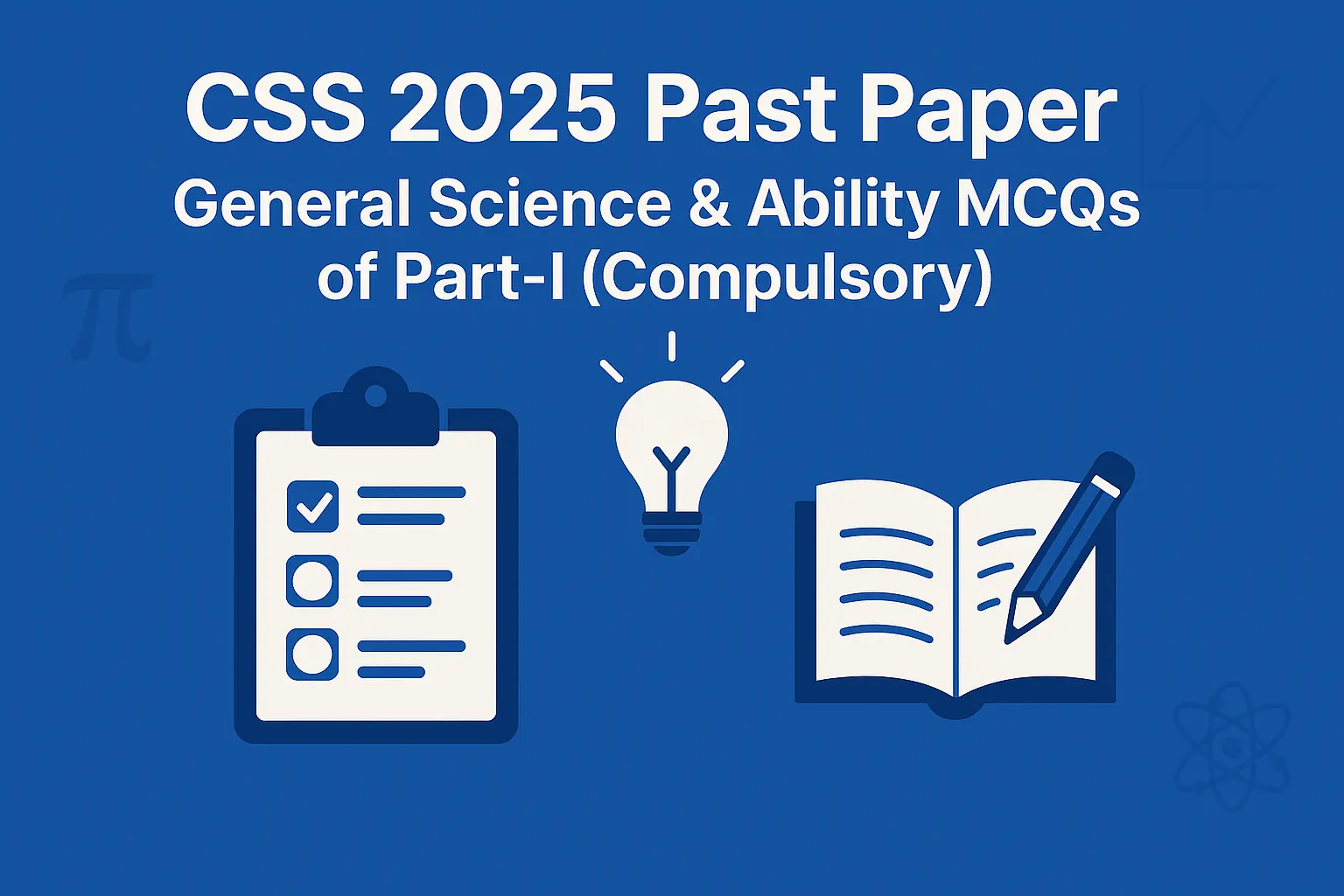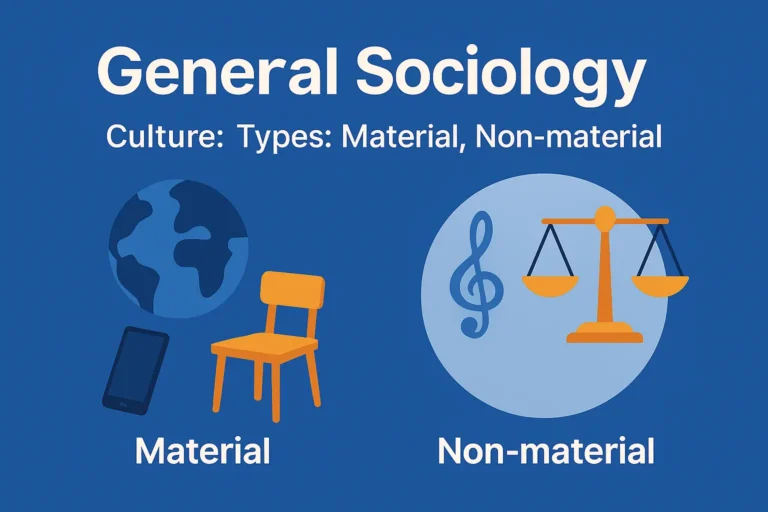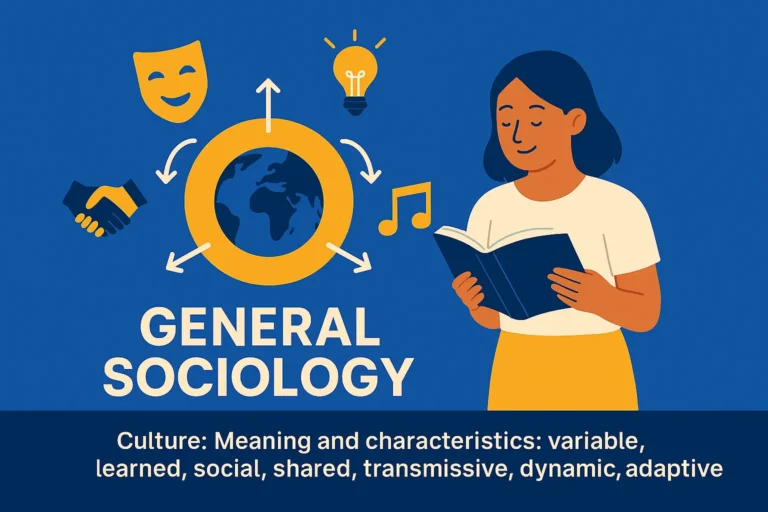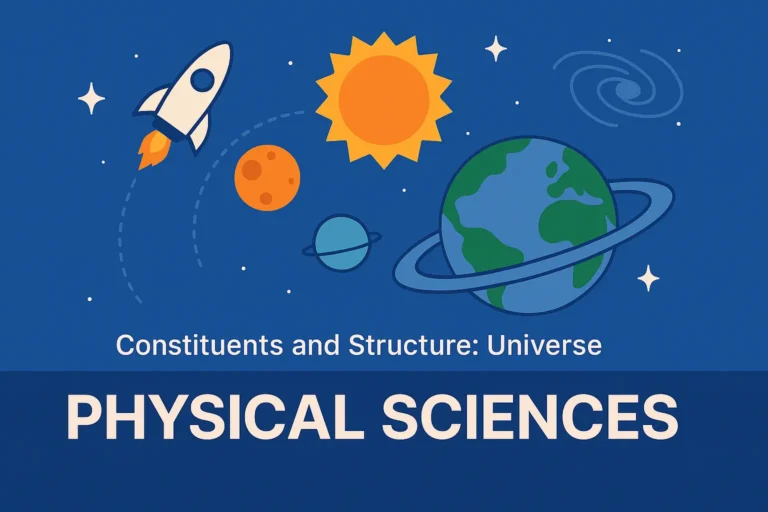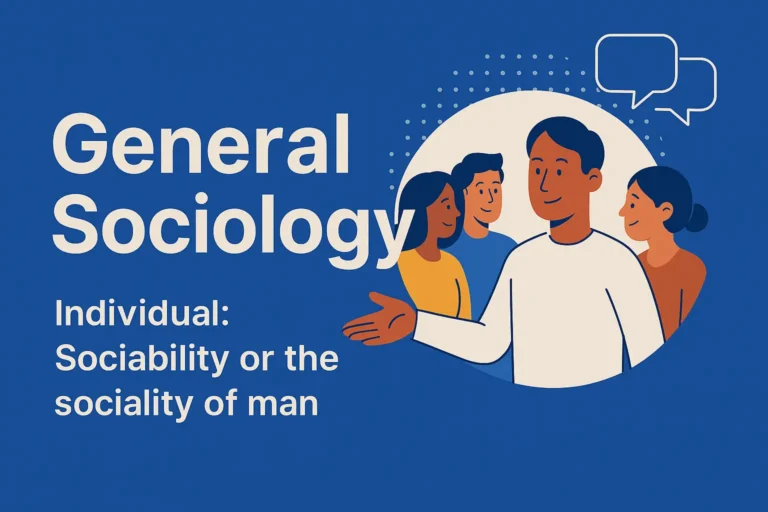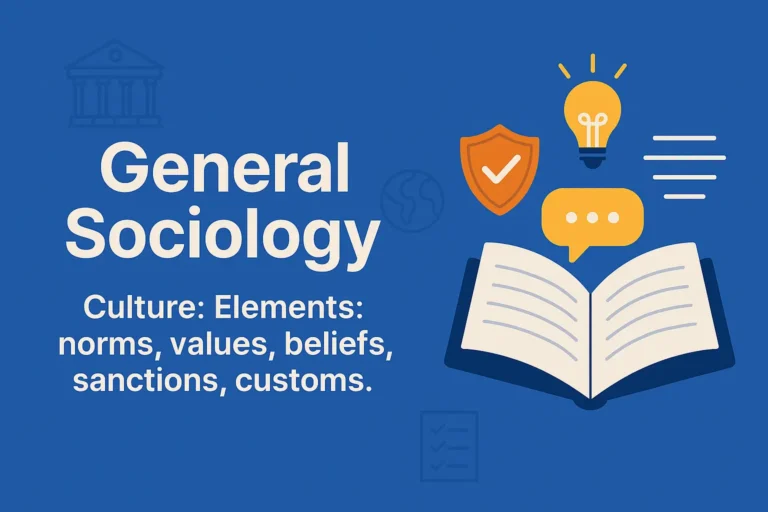CSS 2025 Past Paper – General Science & Ability MCQs of Part-I (Compulsory)
Below are the solved multiple-choice questions (MCQs) of Part-I from the CSS 2025 General Science & Ability paper. Each question includes all the options, the correct answer is bolded, and a short explanation is provided for clarity.
1. ‘Blue dwarfs’ and ‘Red giants’ respectively refer to:
(A) Moons of Jupiter
(B) Young star and Old star
(C) Old star and Young star
(D) None of these
💡 Red giants are aging stars that have expanded, while blue dwarfs are hypothetical stars still in a future stage of evolution.
2. Most major Tsunamis are produced by earthquakes with hypocenters less than:
(A) 30 km
(B) 40 km
(C) 50 km
(D) None of these
💡 Shallow underwater earthquakes (<30 km deep) are more likely to cause large tsunamis due to greater seafloor displacement.
3. Which of the following source of energy is caused by uneven heating of earth’s surface?
(A) Wind
(B) Solar
(C) Biomass
(D) None of these
💡 Wind is generated when the sun heats different parts of the Earth unevenly, creating air pressure differences.
4. Global winds towards western direction are known as:
(A) Trade winds
(B) Western winds
(C) Reynolds wind
(D) None of these
💡 Trade winds blow from east to west near the equator due to Earth’s rotation and convection cycles.
5. Perinatal transmission is said to occur when a pathogen is transmitted from:
(A) Non-human to human
(B) Infected to uninfected
(C) Mother to infant
(D) None of these
💡 Perinatal transmission occurs during pregnancy, childbirth, or breastfeeding.
6. Which of the plant group needs both land and water to complete their life cycle?
(A) Bryophyta
(B) Tracheophyta
(C) Thallophyta
(D) None of these
💡 Bryophytes (like mosses) require water for reproduction but grow on land.
7. Maximum amount of carbohydrates are obtained from:
(A) Nuts
(B) Plant oil
(C) Whole grain food
(D) None of these
💡 Whole grains provide complex carbohydrates which are the main energy source for the body.
8. Which of the following class has the largest number of animals?
(A) Fishes
(B) Insects
(C) Mammals
(D) None of these
💡 Insects are the most numerous group in the animal kingdom with millions of species.
9. The process of preserving meat by stewing in a covered earthenware jug is called:
(A) Burial
(B) Jugging
(C) Curing
(D) None of these
💡 Jugging is a traditional method of cooking meat slowly in a jug with spices and liquid.
10. All operating systems get their total memory initialized from:
(A) BIOS
(B) RAM
(C) ROM
(D) CPU
💡 BIOS initializes hardware and loads the operating system into memory during booting.
11. The amount of data transmitted for a given amount of time is called:
(A) Noise
(B) Bandwidth
(C) Frequency
(D) None of these
💡 Bandwidth is the maximum rate of data transfer across a network or internet connection.
12. Which of the following products can be prepared using raw guava?
(A) Jam
(B) Jelly
(C) Both (A) and (B)
(D) None of these
💡 Guava is rich in pectin, making it suitable for both jams and jellies.
13. Which of the following is used as a stabilizer in ice cream?
(A) Sugar
(B) Milk
(C) Gelatin
(D) None of these
💡 Gelatin prevents the formation of large ice crystals, giving ice cream a smooth texture.
14. In the structure of fiber, the light is guided through the core due to total internal:
(A) Reflection
(B) Refraction
(C) Diffraction
(D) None of these
💡 Light is transmitted through optical fiber by total internal reflection, keeping the light trapped in the core.
15. Who is known as the inventor of Artificial Intelligence?
(A) Charles Babbage
(B) John McCarthy
(C) Alan Turing
(D) None of these
💡 John McCarthy coined the term “Artificial Intelligence” and is recognized as one of its pioneers.
16. Which of the following is the common language for Artificial Intelligence?
(A) Java
(B) Python
(C) Lisp
(D) None of these
💡 Lisp is a prominent language in early AI development, especially for symbolic processing.
17. Cement factory labourers are prone to:
(A) Leukemia
(B) Cytosilicosis
(C) Bone marrow
(D) None of these
💡 Inhalation of fine silica dust in cement industries can cause cytosilicosis, a respiratory disease.
18. The fastest enzyme is:
(A) Pepsin
(B) DNA polymerase
(C) Carbonic anhydrase
(D) None of these
💡 Carbonic anhydrase rapidly catalyzes the conversion of CO₂ and water into carbonic acid in blood.
19. Process of adding vitamins to milk is known as:
(A) Flavoring
(B) Fortification
(C) Fermentation
(D) None of these
💡 Fortification improves the nutritional value of milk by adding essential vitamins like A and D.
20. The waves which are used for line of sight (LOS) communication are called:
(A) Space waves
(B) Cable waves
(C) Antenna waves
(D) None of these
💡 Space waves are used for LOS communication as they travel in straight lines between antennas.

